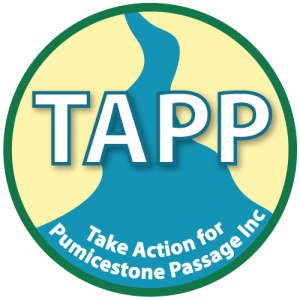Deborah Metters, Land for Wildlife
Deborah Metters is an ecologist and environmental consultant who works in partnership with 13 councils from across south-east Queensland to deliver the Land for Wildlife program. It is a program that offers personalised advice and practical support to help landholders achieve nature conservation on their properties. There are 5,000 Land for Wildlife properties across SEQ with last year (2020) delivering the highest annual growth of new memberships in the program’s 20+ year history. Deborah’s role as Regional Coordinator is to support the 13 councils, deliver regional LfWSEQ resources, provide regional communications and ensure continuous improvement. This presentation has been developed in partnership with Sunshine Coast Council and Moreton Bay Regional Council who deliver a suite of conservation services to Land for Wildlife members in the Pumicestone catchment. Deborah is also an avid birder who regularly visits the Pumicestone to undertake shorebird surveys.
Abstract:
Pumicestone is a complex and unique catchment with large parcels of different land uses resulting in a patchwork landscape. The Pumicestone catchment is well known for its extensive pine plantations, ex-grazing land undergoing development and intensive horticulture of pineapples, strawberries and macadamias. Significant Indigenous cultural heritage sites are found across the catchment, some of which offer rare public access to bora rings, scar trees and grinding grooves. There are major transport corridors dissecting the catchment, extractive industries including sand mining, postage stamp sized National Parks around the Glasshouse Mountains and thin ribbons of native vegetation along waterways. Overall, the Pumicestone catchment presents a significant challenge for landscape-scale conservation.
Despite the challenges, many landholders across the Pumicestone catchment have prioritised conservation on their properties or integrate conservation with other land uses. The Land for Wildlife program offers these landholders advice and support to help them manage their properties for conservation. Pumicestone Land for Wildlife members manage a diversity of properties and ecosystems including mangrove-lined littoral forests facing tidal inundation by the end of the century, agricultural farms managing small forest remnants, rural lifestyle blocks with rainforest managing environmental weeds and heathland ecosystems requiring active fire management. Some of these properties and their owners have made significant contributions to conservation. They have helped recover the Richmond Birdwing butterfly and are managing habitat for the threatened Water Mouse. They undertake regular weed management and active erosion control. While others have undertaken ecological burns and are involved in annual post-fire recruitment monitoring.
